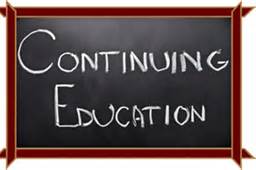
Those who settle in Spain and want to take their children to school there should know that enrollment is relatively easy.
Parents must bring a birth certificate and a registration certificate, a document certifying the child’s domicile in Spain. Then just fill out the transcript and attach a set of eight photos to the file. According to the parents on opinionesespana.es, the registration is done on the spot, and the child receives a registration number.
Free afterschool and ratings instead of grades
As in other countries, for the infant and primary cycle, there is a teacher, and for the gymnasium, there are teachers in each subject. There are no more than 25-27 students in a class. Afterschool is also free, under the name of “dining room” or “toy library”. Here, the children do their homework, in the presence of a teacher, play or have various other activities. Many interesting and important information can be found on emagister.
From the point of view of evaluation, in the infant cycle, at the end of each semester, students receive a personal evaluation, a characterization in which the child’s progress is indicated, as well as the aspects to which improvements can be made. In the primary and secondary school cycle, parents receive a school notice with grades for each subject, divided into
- “Insufficient” (equivalent to grades 1 to 4),
- “Sufficient” (equivalent to footnote 5),
- “Good” (note 6),
- ‘Notable’ (equivalent to notes 7 and 8)
- ‘Outstanding’ (equivalent to notes 9 and 10).
They are given homework, but few, and these are solved at “afterschool” so that they do not have to learn more at home.
Baccalaureate and higher education
Following the compulsory study cycle, the graduate can opt for a Vocational Technical Training School – of skills – where they can enroll even without the promotion diploma. Or he can take the preparatory courses for the baccalaureate, equivalent to the 11th and 12th-grade classes, for which they need a high school diploma (“Instituto”). Those who pass the Baccalaureate exam have the right to enroll in a college or in Higher Level Technical Training Courses, for which they will take an exam.
Living and studying in Spain
Spain is a favorite destination for students from all over the world.
It is a welcoming multicultural country with an excellent quality of life. The numbers speak for themselves:
- Spain is the country with the highest number of foreign students with the Erasmus + program.
- Spain is famous for its monuments and historical sites.
- You live and eat very well in Spain.
Documents required for the study in Spain
Studying in Spain is an unforgettable experience. The opportunities you will find in the training centers in the country will provide you with a crucial professional experience to access the labor market with guarantees of success.
The first thing to do to study in Spain is to request the following documents and meet the following five requirements:
- Obtain a residence permit in Spain – If you want
 With a highschool diploma or a Basic Equivalency Diploma (GED), you will apply to any of MATCH’s affiliate diploma packages. Of that group, virtually 6 in 10 talked about they’ve had a constructive experience doing so. The advantages, they contend, are expanded enterprise choices and narrowed abilities gaps, notably in sure expertise disciplines like data analytics the place a shortage of potential has held the channel back from penetrating enterprise accounts.
With a highschool diploma or a Basic Equivalency Diploma (GED), you will apply to any of MATCH’s affiliate diploma packages. Of that group, virtually 6 in 10 talked about they’ve had a constructive experience doing so. The advantages, they contend, are expanded enterprise choices and narrowed abilities gaps, notably in sure expertise disciplines like data analytics the place a shortage of potential has held the channel back from penetrating enterprise accounts. Training is about learning skills and knowledge It also means helping individuals to learn to do issues and help them to consider what they study. Many countries provide free public training but require parents to pay extra prices for issues like uniforms, textbooks, transportation and provides. Classroom management has turn out to be an integral instrument allowing lecturers to make sure that their students are on task.
Training is about learning skills and knowledge It also means helping individuals to learn to do issues and help them to consider what they study. Many countries provide free public training but require parents to pay extra prices for issues like uniforms, textbooks, transportation and provides. Classroom management has turn out to be an integral instrument allowing lecturers to make sure that their students are on task.